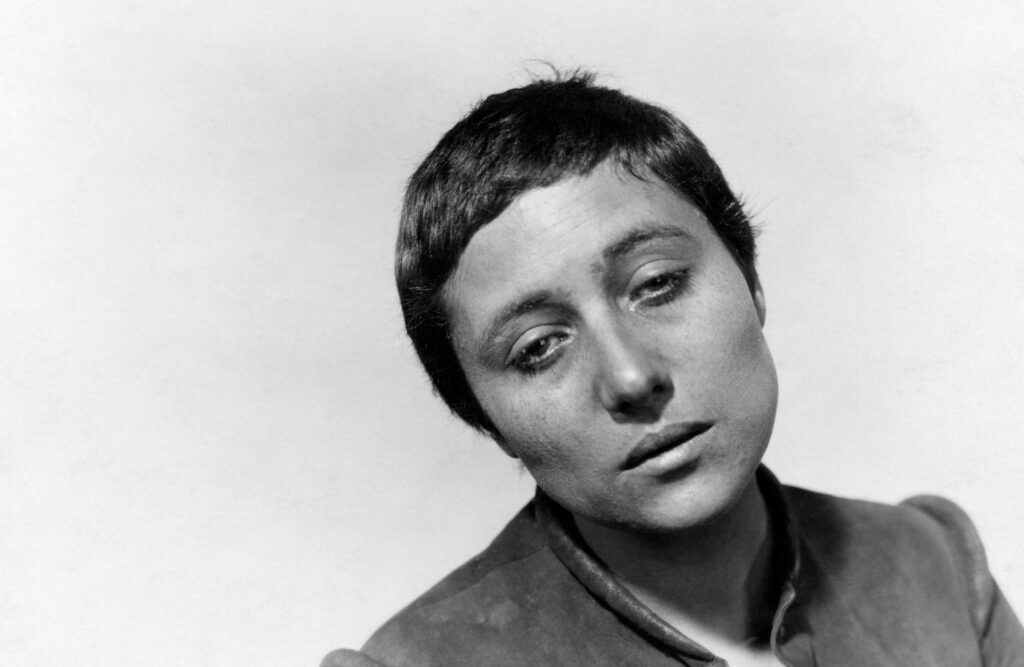Classic Film: The Passion of Joan of Arc
Written by Ian Thomas Malone, Posted in Blog
The Passion narrative carries a lot of theatrical value even for non-believers. The sham trials of Jesus before the Sanhedrin and Pontius Pilate perhaps best illustrate the larger-than-life nature of one of history’s defining characters, a man grappling with the contrast of divinity and humanity in real time. The 1928 silent film The Passion of Joan of Arc (original French title La Passion de Jean d’Arc) blends the history of one of France’s most beloved icons with the biblical tribulations of her spiritual lodestar.
Director Carl Theodor Dreyer’s work is a singular experience in filmmaking. Relying heavily on close-ups, with an absolutely breathtaking concrete practical set, the narrative sets up a succulent contrast throughout its 82-minute runtime. As the titular heroine, Renée Jeanne Falconetti’s expressive dramatic range evokes a sense of claustrophobia, buoyed by the imposing prison all around her. Falconetti never once lets up on all the angst coursing through Joan’s veins, delivering one of the finest performances in the history of film.
The silent film medium is perfect for the kind of storytelling on display in the film. The inter-title cards provide the necessary grounding for the audience to follow along with the plot, giving space for the actors to transcend all other conventional dramatic obligations. The musical accompaniment to Joan’s agony and the Machiavellian machinations strips the form down to its bare essentials, an immensely fulfilling adaption of the passion narrative.
All art is essentially human nature channeled through the creator’s preferred medium. There are limits to what a painting can do on a canvas or a film on its reel. Dreyer delivers a timeless treatise on the agony of the soul that bristles against the confines of its structure, a film so carefully constructed yet completely raw in its delivery. The Passion of Joan of Arc grabs you from its opening minutes and never lets go, an exhausting experience that drains almost as much as it inspires.
Perhaps more impressive than its ample artistic merits is the way the film breaks down the terrifying sense of awe and wonder of Catholicism, particularly its penchant for evoking guilt, for a general audience. Religion looms over much of popular culture and society at large, even for those of us who have nothing to do with the Church. Many religious narratives fall flat through their preoccupation with attempting to explain the unexplainable. The whole point of faith is belief in something larger than yourself, essentially for little reason other than it’s what you’ve chosen to believe. It’s not particularly convincing for many, for obvious reasons.
Billions of people have come and left this earth hanging on to a promise of eternal life that may never come. The Passion of Joan of Arc does not make much of an effort to explain why its titular hero chose martyrdom at the hands of a sham trial. What it does achieve is perhaps the most impressive feat for a religious narrative. For those seeking to understand the agony of faith grappling with itself in real-time, there are few better places to start than Falconetti’s spectacular performance. Dreyer’s nearly one-hundred-year-old work is still one of the defining examples of the sheer power of filmmaking to break down the barriers of time and space and deliver the essence of what it means to be alive.
Editorial note: Ian viewed a screening of the film with a live original score featuring the George Sarah Ensemble at the Art Theatre in Long Beach, California.












This article rightly calls the trial of Joan of Arc a sham trial since English government records and dozens of eyewitness accounts prove that it was manipulated by the English occupation government and run by pro-English collaborators who falsified the transcript on important points; but that poses a problem for this film since the film was based entirely on that transcript. Even if the actress gave a great performance, the film is marred by presenting a false version of events: eyewitnesses said she did in fact submit to the Pope and Council of Bishops (which was edited out of the transcript) and in fact she had already been approved in April 1429 (before her military campaigns) by high-ranking clergy at Poitiers including the Inquisitor for Southern France. Several eyewitnesses said her so-called “cross-dressing” (i.e. wearing a soldier’s horseback-riding outfit) was distorted in the transcript because she had told them that she continued wearing this type of clothing in prison so she could keep the various parts “securely laced and tied” together to hinder her guards from pulling her clothing off by lacing the long hip-boots, trousers, and tunic all together into a single piece, whereas a dress would leave her a lot more vulnerable to molestation or rape. Summaries of medieval Catholic doctrine such as the Summa Theologica explicitly granted an exemption for “cross-dressing” if it was done out of necessity, including protection from rape, so she was not violating any precepts of the Church by wearing it for protection or any other practical reason. The trial bailiff, Jehan Massieu, said her alleged “relapse” into wearing this clothing was engineered by her guards who took away the dress she had agreed to wear and forced her to put the soldier’s outfit back on, then the judge came in and condemned her for relapsing into “cross-dressing”. The film doesn’t show any of this, but instead depicts a variation of the transcript’s false claims. The film was nonetheless better than most of the more modern films on the subject since at least the director didn’t stick his own ideological spin into it, but he did (unwittingly) inject the spin promoted by the people who put her to death.